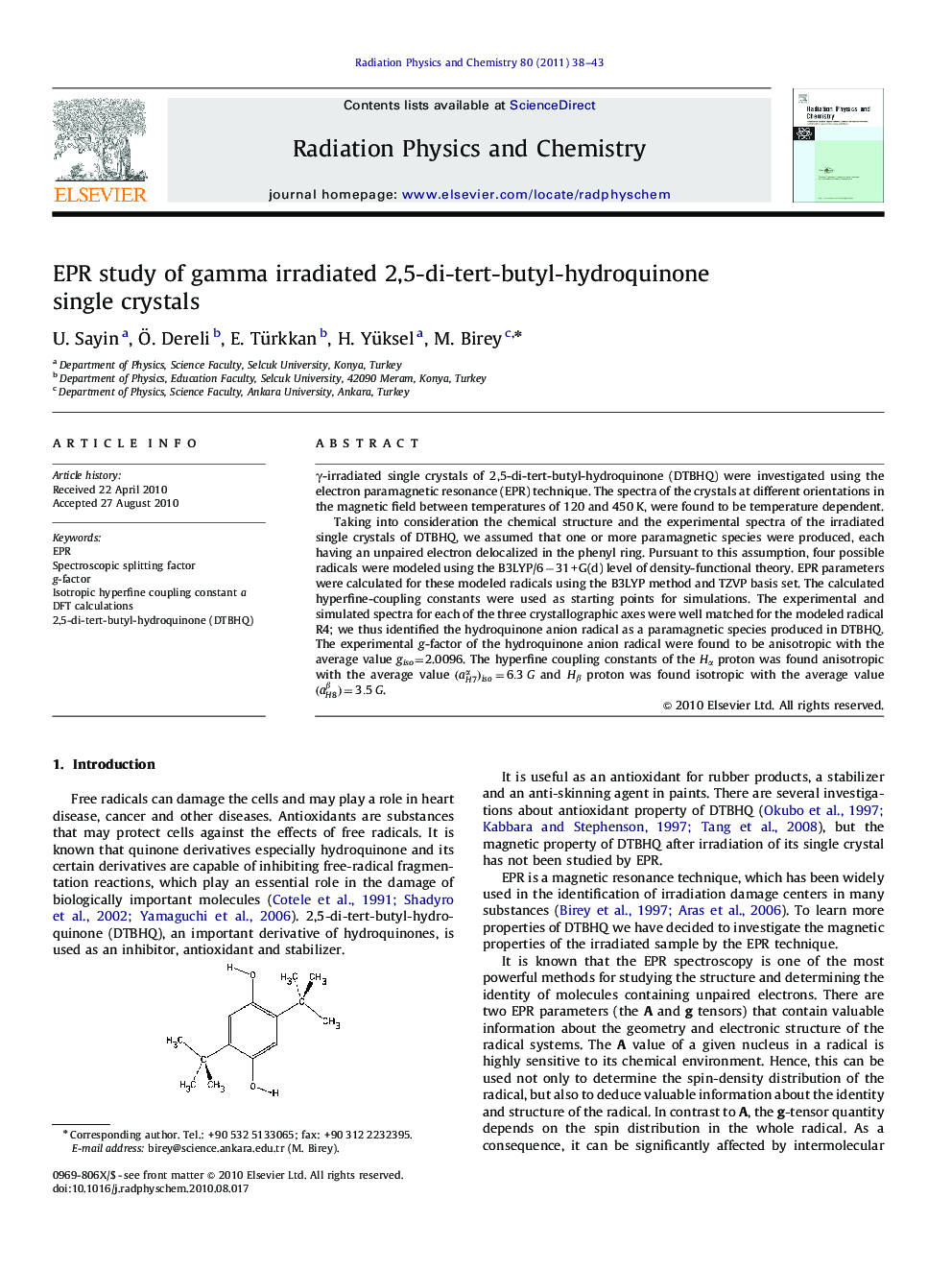| Article ID | Journal | Published Year | Pages | File Type |
|---|---|---|---|---|
| 1891854 | Radiation Physics and Chemistry | 2011 | 6 Pages |
Abstract
Taking into consideration the chemical structure and the experimental spectra of the irradiated single crystals of DTBHQ, we assumed that one or more paramagnetic species were produced, each having an unpaired electron delocalized in the phenyl ring. Pursuant to this assumption, four possible radicals were modeled using the B3LYP/6â31+G(d) level of density-functional theory. EPR parameters were calculated for these modeled radicals using the B3LYP method and TZVP basis set. The calculated hyperfine-coupling constants were used as starting points for simulations. The experimental and simulated spectra for each of the three crystallographic axes were well matched for the modeled radical R4; we thus identified the hydroquinone anion radical as a paramagnetic species produced in DTBHQ. The experimental g-factor of the hydroquinone anion radical were found to be anisotropic with the average value giso=2.0096. The hyperfine coupling constants of the Îα proton was found anisotropic with the average value (aH7α)iso=6.3G and Îβ proton was found isotropic with the average value (aH8β)=3.5G.
Related Topics
Physical Sciences and Engineering
Physics and Astronomy
Radiation
Authors
U. Sayin, Ã. Dereli, E. Türkkan, H. Yüksel, M. Birey,
